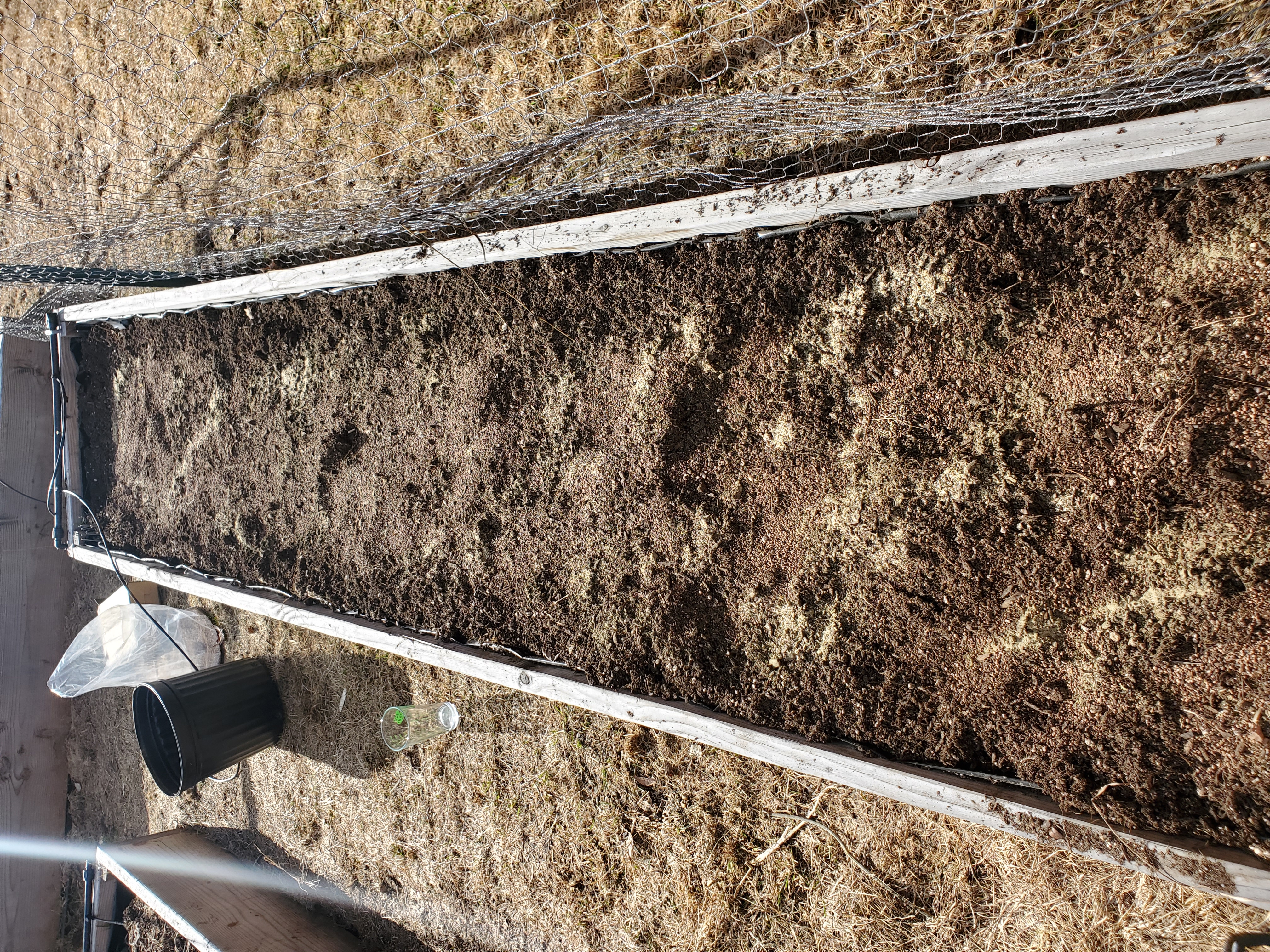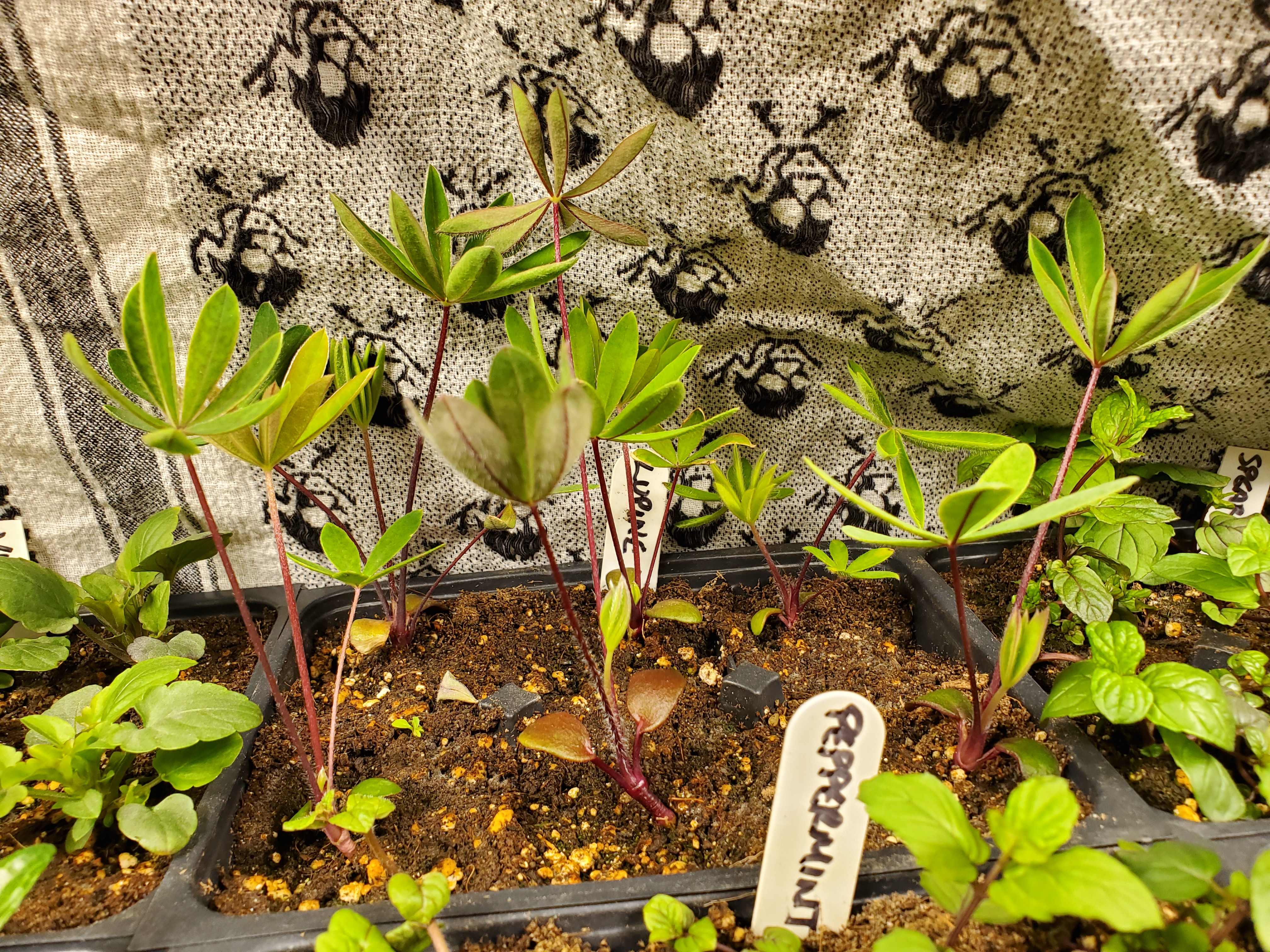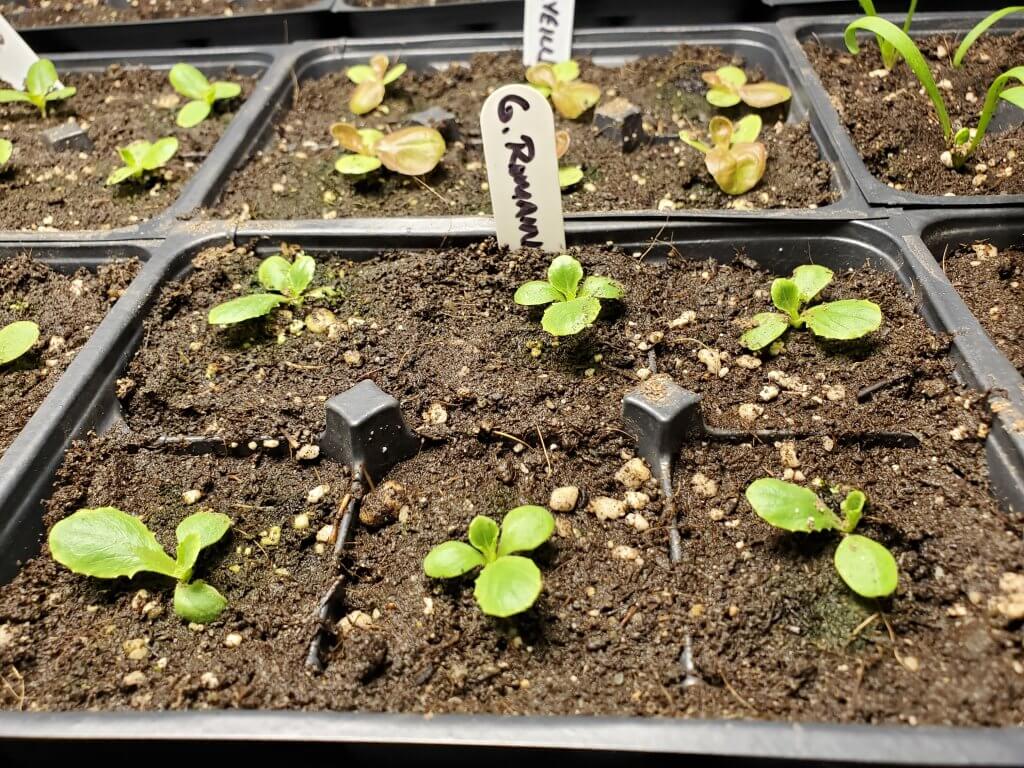The Interior Alaska Planting Schedule For May
This is part three of our monthly seed planting series where we detail what we’re sowing over the months of March, April and May.
This guide generally follows our published planting schedule for USDA zones 2a through 4b. We have also established date corrections for other northern zones.
May features a fairly light planting schedule overall, with only a single indoor planting scheduled. The remainder of our plants are direct sowed, right into the garden!
Seeds You Should Plant Around May 4th
- Cucumber
- Melon (Marginal Alaska crop)
- Sunflower
- Canary Bird Vine
- Mignoette
- Nemophila
- Sweet Alyssum
- Zinnia
- Forget Me Nots
Direct Sow Between May 18th & June 5th
- Radish (often succession planted)
- Spinach (often succession planted)
- Beets
- Carrot
- Parsnip
- Peas
- Potatoes
- Turnip
- Rutabaga
- Beans (Pole & Bush, best to wait until after June 1st)
All of our direct sowed seeds are rather tolerant to cooler temperatures. If the soil is workable, we will often get things in the ground 2 weeks prior to last frost.
It’s important to note that we are paying close attention to the weather. If late snows or unseasonably cold temperatures are in the forecast, we’ll hold off until conditions improve.
Our May Planting Commentary
Phew! You made it through April. Hopefully you have some nice plants to show for it!
With our final April plantings completed, it’s time to start looking at May! The garden is still only getting started!

May is always an exciting month for us. The snow finally recedes. More importantly, the soil starts to become workable. We can begin direct sowing some of our crops right into our gardens! How exciting!
May is definitely the point of no return for planting most things that should have been sowed in April. We would not recommend sowing anything now that should have been sowed in March, there just isn’t enough time left!
The Scope Of May Gardening Within Interior Alaska
We have just a little bit of indoor seeding left. For May’s indoor planting, we are left with the fastest growing plants of them all!
The biggest change is that we can begin direct sowing our root crops right into the garden! You want to wait until we get about two weeks or less to last frost. Some years you can do a little earlier, some a little later.
We gauge this by the weather and wait for low temperatures to consistently in the high 30’s or warmer. We do try to get most of our root crops planted early so we have more time later in the month when we need to be working with our transplants.
When you want to push the limits of subarctic gardening, you need to have a deep understanding of plant tolerance to make sure you don’t harm your plants.
This is a picture of our lettuce starts, which were previously sowed in April. We have transplanted them into their final pre-transplant home where they will be planted outside in late May!
The Up-Potting Will Eventually End, We Promise
One of our primary tasks for May is continuing all the transplanting from our seed trays into their semi-permanent transplant pot. We are looking forward to kicking all the seeding trays out of the grow room and just having more mature plants!
At this point, we absolutely need every square inch that our seedling trays were previously using.
Fertilize Your Garden Starts
While we grow our garden starts in high quality soil, it’s still usually a good idea to supplement your plants with a fertilizer.
Once your plants have their 3rd set of true leaves, they’re ready for fertilizer.
In early growth stages like this, we like to use a water soluble fertilizer at roughly 1/4 strength to help maintain vigorous growth.
Continue Hardening Off All Our Plants
During May, we will be hardening off all of our plants in preparation of planting them outdoors. This is a very, very important step when raising seedlings indoors.
Remember, the end of this month is our last frost, so we definitely need to start focusing on getting our plants ready to be outside.
Some of our most cold hardy crops will start living outside once evening temperatures are consistently above freezing. We like to take advantage of May’s decent, but not frost free, weather whenever possible. This also helps us free up some of our indoor growing space.
Our warm weather crops will be hardened off during May as well. We will continue to bring them inside until it is very clear any danger of frost is not present. Once these are hardened off, we will temporarily let them live outside if evening low temperatures are predicted above 50 degrees.
As we’ve matured in gardening, specifically having built a sealed greenhouse, we’ve started to move our young plants into the greenhouse entirely in late April or early May. We operate a heater in the greenhouse that ensures our plants are risk free.
Prepare The Gardens! It Is Time!
One of the largest tasks for May is preparing our gardens for the year. We are aiming to try to get the bulk of our plants in the ground by our last frost date, or June 1st! Sometimes we try to squeak them in Memorial Day weekend!

Our primary garden preparations include cleaning up anything that we didn’t get to last fall. Many times, we find it easier to let the cold temperatures kill off our plants so they are easier to remove in the spring.
We’re also preparing all of our garden beds. We add compost to all of our beds and also prepare them with fertilizer, azomite and possibly more greensand.
Also to prepare our gardens, we till up the top layer of our wide raised row community garden to incorporate our compost. We have found our soil “cakes” pretty bad at this garden and a light tilling is a beneficial practice.
Some years, we’ll have general maintenance we have to complete. Examples might include replacing weed fabric, fixing irrigation systems or other general garden upkeep.
Finally, we’ll be preparing our container gardens. Preparing our containers is always a lot of work, but a worthwhile effort for the northern gardener.
Sometimes our plans call for the production of quite a bit more soil and we try to get this completed in May. Basically, we aim to try to have everything ready by the end of the month, or sooner.
Our Grow Rooms Are Getting TIGHT!
 With our final plantings, our grow room is always bursting at capacity this time of the year.
With our final plantings, our grow room is always bursting at capacity this time of the year.
Even as experienced gardeners that know how to manage indoor growing space, we always experience some challenges every year.
Throughout May, we’ve started transitioning our cold hardy plants out into our small, temperature controlled greenhouse (now, our big greenhouse!) throughout the month. Throughout most of May, we will be trying to transition our hardiest plants outdoors as soon as we can.
We’re not yet ready to put our cold hardy plants in the ground. We wait until at least Memorial Day weekend. But, we will keep our cold hardy plants outside in their trays when evenings are expected to be above freezing.

In this picture, you can see some of our flowers almost big enough to go outside! Most flowers are frost sensitive, so make sure you plant them outside well after any danger of frost.
For all frost sensitive plants, we will harden these off during warmer days in May, typically those above 60 degrees. However, these plants will continue to be raised indoors until outdoor temperatures are suitable for them to live outside.
Since they will be hardened off, we can keep them outside any evening expected to be above 50 degrees. We usually like to have these plants in the ground by June 5th, except for peppers which stay indoors until a week or two after last frost.
Garden Projects Can Finally Get Started!
We always have a few garden related projects that we are planning on trying to accomplish. May is often the month we use to get them started!
One thing we’ve learned is that it can be difficult to do everything, all at once!
It’s not impossible to get big projects completed by June. For example, we built our greenhouse in May so it would be ready for our summer growing season!
It’s just a good idea to look at your plans realistically, since May and early June have a lot of other gardening activities associated with it!
That’s All We Wrote!

Having a good time? We have an ever growing list of insightful and helpful subarctic & cold climate gardening articles, waiting out there for you!
- Cold Climate Gardening Basics 👉
- Growing Your Garden From Seed Indoors 👉
- Advanced Cold Climate Gardening Techniques 👉
- Plant Specific Cold Climate Growing Guides 👉
- Subarctic Perennial Food Forests & Foraging 👉
- Indoor Garden Lighting & Grow Rooms 👉
- Greenhouses & Temperature Control 👉
- Harvesting & Food Preservation 👉
- Solving Cold Climate Garden Problems 👉
- 1 Minute Reads On Tons Of Garden Topics 👉
FrostyGarden.com is 100% ad-free and we do not use affiliate links! This resource is voluntarily supported by our readers. (Like YOU!) If we provided you value, would you consider supporting us?

